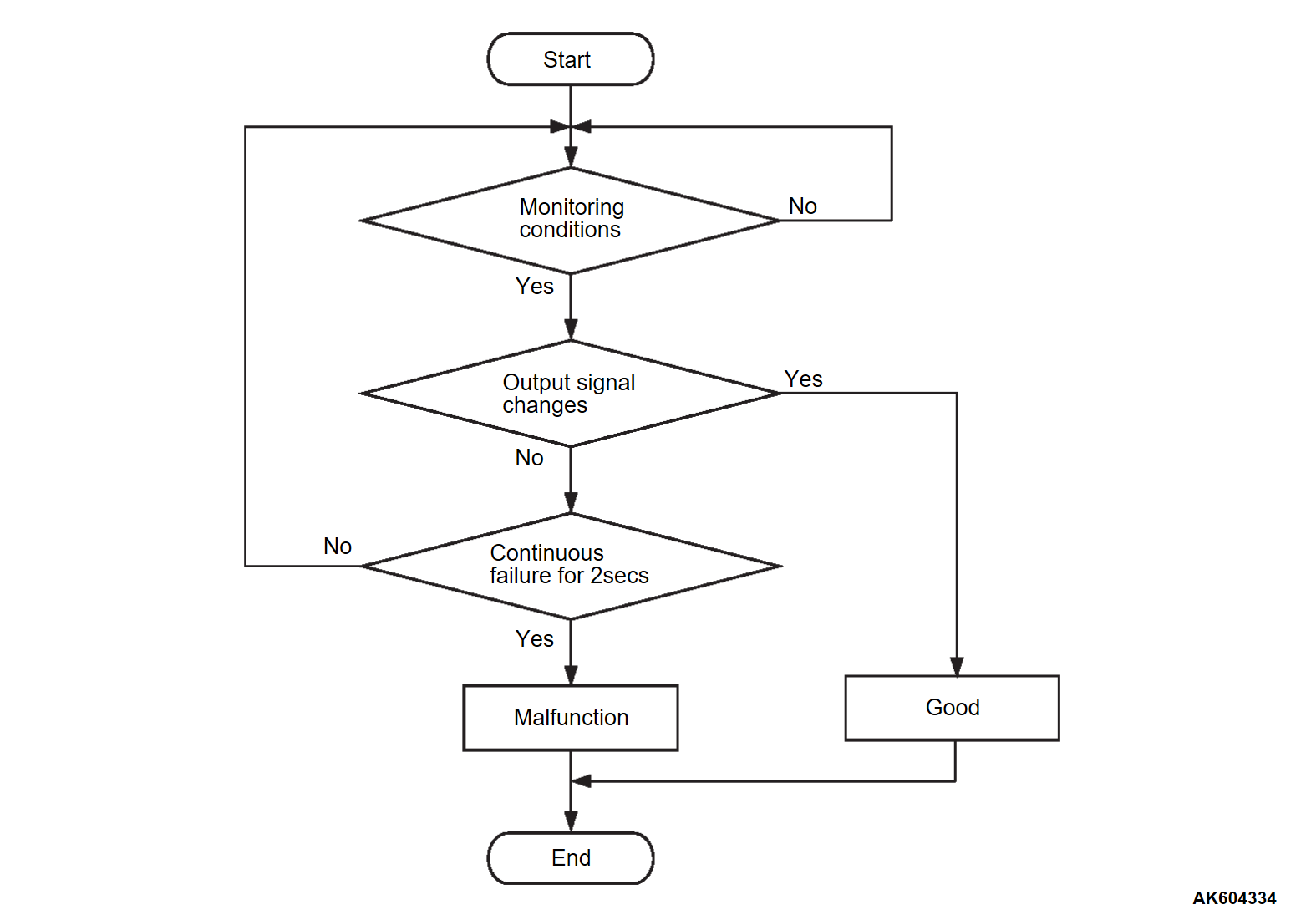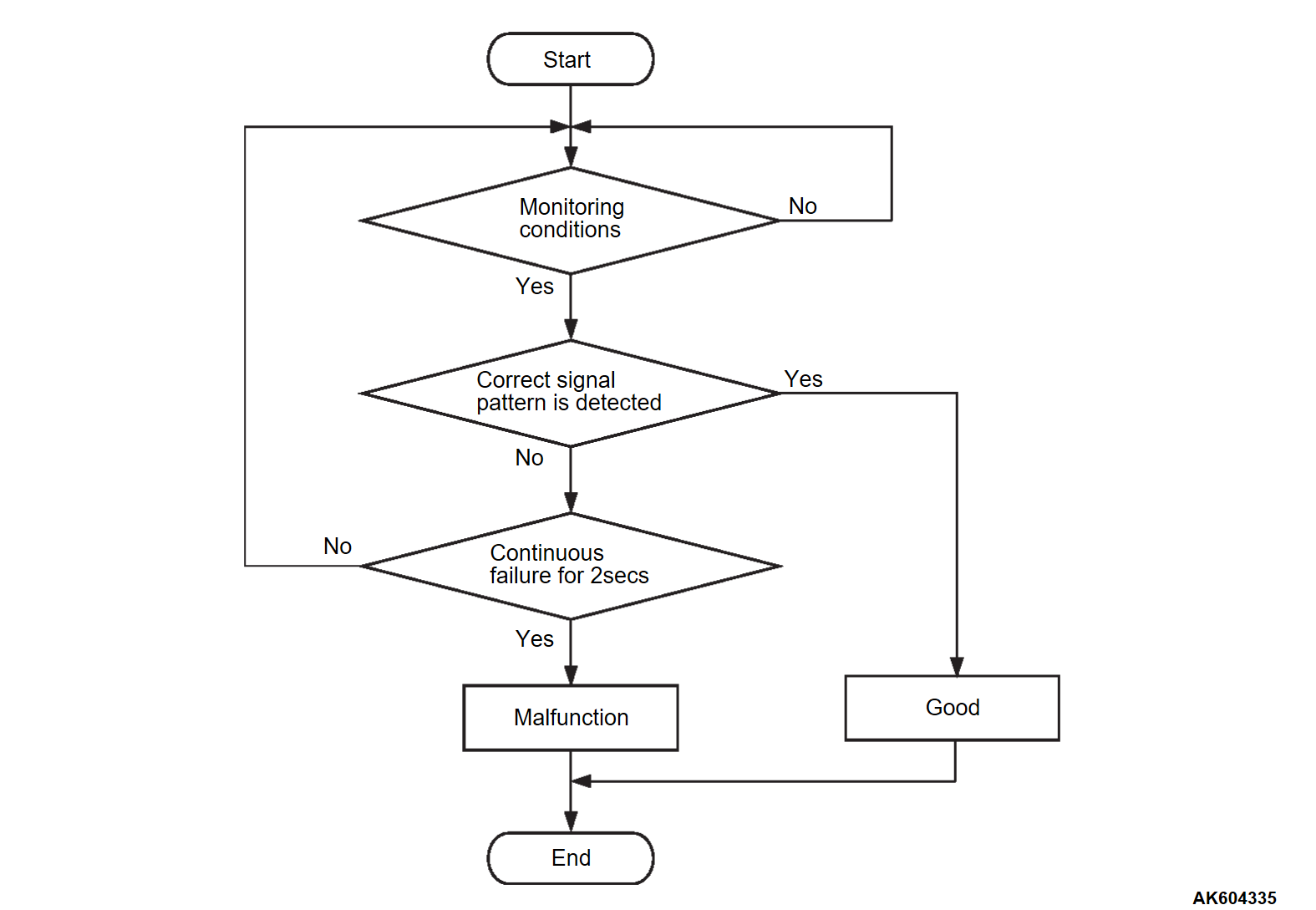DTC P0335: Crankshaft Position Sensor Circuit
CIRCUIT OPERATION
- The crankshaft position sensor power is supplied from the ECM terminal 5V.
- Ground terminal of the crankshaft position sensor is grounded with ECM terminal DGND.
- A 5-volt voltage is applied on the crankshaft position sensor output terminal from the ECM terminal SGT. The crankshaft position sensor generates a pulse signal when the output terminal is opened and grounded.
TECHNICAL DESCRIPTION
- The crankshaft position sensor detects the crank angle (position) of each cylinder, and converts that data to pulse signals, then which are input to the ECM.
- When the engine is running, the crankshaft position sensor outputs a pulse signal.
- The ECM checks whether pulse signal is input while the engine is cranking.
DESCRIPTIONS OF MONITOR METHODS
- Crankshaft position sensor signal does not change.
- Crankshaft position sensor signal is not normal pattern.
MONITOR EXECUTION
- Continuous
MONITOR EXECUTION CONDITIONS (Other monitor and Sensor)
Other Monitor (There is no temporary DTC set in memory for the item monitored below)
- Not applicable
Sensor (The sensor below is determined to be normal)
- Not applicable
DTC SET CONDITIONS <Circuit continuity>
Check Condition
- Engine is being cranked.
or
- Engine speed is higher than 500 r/min excluding during cranking.
Judgment Criterion
- Crankshaft position sensor output voltage has not changed (no pulse signal is input) for 2 seconds.
DTC SET CONDITIONS <Range/Performance problem - alignment>
Check Condition
- Engine is being cranked.
or
- Engine speed is higher than 500 r/min excluding during cranking.
Judgment Criterion
- Normal signal pattern has not been input for cylinder identification from the crankshaft position sensor signal and camshaft position sensor signal for 2 seconds.
FAIL-SAFE AND BACKUP FUNCTION
- None.
TROUBLESHOOTING HINTS (The most likely causes for this code to be set are: )
- Crankshaft position sensor failed.
- Open or shorted crankshaft position sensor circuit, or harness damage or connector damage.
- Crankshaft position sensing ring failed
- ECM failed.
DIAGNOSIS
STEP 1. Using scan tool (M.U.T.-IIISE), check data list item 2: Crankshaft Position Sensor.
| caution | To prevent damage to scan tool (M.U.T.-IIISE), always turn the ignition switch to the "LOCK" (OFF) position before connecting or disconnecting scan tool (M.U.T.-IIISE). |
(2) Start the engine and run at idle.
(3) Set scan tool (M.U.T.-IIISE) to the data reading mode for item 2, Crankshaft Position Sensor.
- The tachometer and engine speed indicated on the scan tool should match.
(4) Turn the ignition switch to the "LOCK" (OFF) position.
Is the sensor operating properly?
STEP 2. Using the oscilloscope, check the crankshaft position sensor.
- Engine: Idling
- Selector lever: P range
- Voltage between terminal SGT and ground.
Is the wave pattern normal?
STEP 3. Measure the sensor supply voltage at crankshaft position sensor harness side connector.
(1) Disconnect the crankshaft position sensor connector and measure at the harness side.
(2) Turn the ignition switch to the "ON" position.
(3) Measure the voltage between terminal SGT line and ground.
- Voltage should be between 4.9 and 5.1 volts.
(4) Turn the ignition switch to the "LOCK" (OFF) position.
Is the measured voltage between 4.9 and 5.1 volts?
STEP 4. Check of short to ground and open circuit in SGT line between crankshaft position sensor connector and ECM connector.
Is the harness wire in good condition?
STEP 5. Measure the power supply voltage at crankshaft position sensor harness side connector.
(1) Disconnect the crankshaft position sensor connector and measure at the harness side.
(2) Turn the ignition switch to the "ON" position.
(3) Measure the voltage between terminal 5V line and ground.
- Voltage should be battery positive voltage.
(4) Turn the ignition switch to the "LOCK" (OFF) position.
Is battery positive voltage (approximately 12 volts) present?
STEP 6. Check of short to ground and open circuit in 5V line between crankshaft position sensor connector and ECM connector.
Is the harness wire in good condition?
STEP 7. Check the continuity at crankshaft position sensor harness side connector.
(1) Disconnect the crankshaft position sensor connector and measure at the harness side.
(2) Check for the continuity between terminal DGND line and ground.
- Continuity (2 ohms or less)
Does continuity exist?
STEP 8. Check of open circuit and harness damage in DGND line between crankshaft position sensor connector and ECM connector.
Is the harness wire in good condition?
STEP 9. Check of harness damage in 5V line between ECM connector and crankshaft position sensor connector.
Is the harness wire in good condition?
STEP 10. Check of harness damage in SGT line between ECM connector and crankshaft position sensor connector.
Is the harness wire in good condition?
STEP 11. Check the crankshaft position sensing ring.
Is the crankshaft position sensing ring in good condition?
STEP 12. Using scan tool (M.U.T.-IIISE), check data list item 2: Crankshaft Position Sensor.
(1) Turn the ignition switch to the "ON" position.
(2) Set scan tool (M.U.T.-IIISE) to the data reading mode for item 2, Crankshaft Position Sensor.
- The tachometer and engine speed indicated on the scan tool should match.
(3) Turn the ignition switch to the "LOCK" (OFF) position.
Is the sensor operating properly?
![[Previous]](../../../buttons/fprev.png)
![[Next]](../../../buttons/fnext.png)




